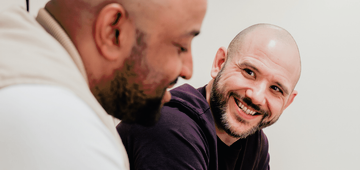Dr. Rosalind Stanwell-Smith FFPH FRCOG MSc (Org. Behaviour) HonFRSPH, Deputy Editor of Perspectives in Public Health, review the learnings from the recent conference 'Using Behaviour Change, Within the Current Economic, Social and Cultural Context'.
The concept of changing behaviours that may harm health towards healthier choices has long been an aim of public health. The understanding that our behaviour flows from three main sources: desire, emotion and knowledge, was an observation made by Plato around 2,500 years ago.
The new focus on behaviour change programmes reflects the growing evidence base on where to target attempts to modify behaviour - and a switch from the nanny state concept to forming partnerships with patients, the general public, industry and, most importantly, well defined target populations.
This conference provided inspiration and tools for how we should approach behavioural change. The UK statistics for why we should be concerned are stark: type 2 diabetes is rising rapidly, linked to increasing obesity, while smoking claims over 80,000 lives a year and annual new diagnoses of sexually transmitted infections have now reached nearly 500,000.
Alcohol dependency affects 1.6 million people and accidental injury accounts for another 10,000 deaths each year in England. Some policies have been successful, for example on reducing smoking, although it took decades of campaigns.
Policy is all about changing behaviour of course, but how to implement this change? Behavioural scientists have identified the importance of understanding the levers, in particular those emotional and desire parts of motivation that so often pull us off the track from our best intentions for exercise and healthy eating.
There is no ‘one size fits all’ in approaching target groups: the evidence of health inequality, such as in a 12-year gap in life expectancy between some English areas, indicates the importance of environmental and local cultural influences. Social architecture, in guiding people towards healthier choices such as taking the stairs, is one subtle way of influencing them without necessarily changing their minds.
The COM-B (Capability, Opportunity, Motivation) model of behaviour has been used to develop an integrated and evidence-based system to make a behavioural diagnosis for a specific target group and an appropriately designed programme of change.
An appropriate programme involves finding out the likely default behaviour for the target group or individual – and seeking to influence this emotional level of motivation. Change needs to be rewarded and in the modern context this means using available technology, such as messages via smartphone applications, texting and the Internet. For example, a Walk Game app has been used to reward walking by providing a serial story that can only be activated when the device detects hip movement.
Social marketing to make us buy products is already finely tuned to the appeal of immediate gratification: our reflective motivation includes knowledge of what may be a long term damage to health, but if a readily available choice is more pleasurable, a habit, or favoured by ones social group, it’s a powerful influence.
Taking advantage of ‘teachable moments’ when people may be more susceptible to a healthy message is one way of combating this. A health trainer programme, involving investigations and visits following falls in people aged over 65, reduced the incidence of falls requiring emergency care by 38%. The shift towards helping people take responsibility for their health has involved a rebalancing of the relationship between health providers and patients and a move of public health back into local government. Public Health England (PHE) united several different specialties of public health in April 2013 and has embarked on a programme of streamlining a bewildering array of services, by examining and disseminating evidence of good practice.
Health trainers are a new way of using this evidence to influence behaviour. Partnerships with industry are another mechanism for facilitating change: in one example, handwashing was promoted via a message printed on roti breads in India, funded by Unilever as part of their behavior change programme to change attitudes towards handwashing. Testing out different ways of asking people to register as organ donors while renewing their car licences online influenced a reflective motivation in favour of organ transplants (self-reported as 95%) towards registering this intention. This demonstrated the value of the ‘test, learn, adapt’ mantra in showing how different wording or the use of pictures could either increase or reduce the number of registrations.
The concept of translating the message all the way through the programme, from the ideas of how to implement it to how it would be received by the target group, was well covered. Managers and leaders also have a role in both setting an example and in inspiring their staff. No one suggested it would be easy, but use of cartoons, photographs and diagrams helped to outline the steps and how to engage participation.
My favourite cartoon was of two obese toddlers watching TV: one asked what the other was going to be when he grew up, receiving the reply “Diabetic”. The inventor and politician Benjamin Franklin commented that if you consider how hard it is to change yourself, you’ll understand the little chance you have in trying to change others. But with the new insights from behavioural science and the evidence of what works, we can now take that ‘little chance’ forward and give it a better shot. Meanwhile, thanks to RSPH and the great expert speakers for a motivating and informative conference.
We would like to thank Graham Rushbrook, RSPH Development Advisor and Director of RBE Associates, for chairing the conference, and also thank the following organisations for their sponsorship and support on the day: Cancer Research UK; Food for Life Partnership; Hume Consulting Ltd; DIY Happiness; and SMILE.
Speakers included:



